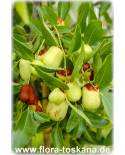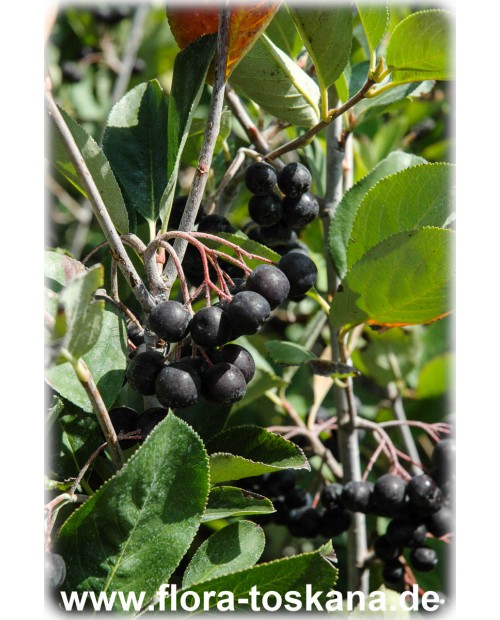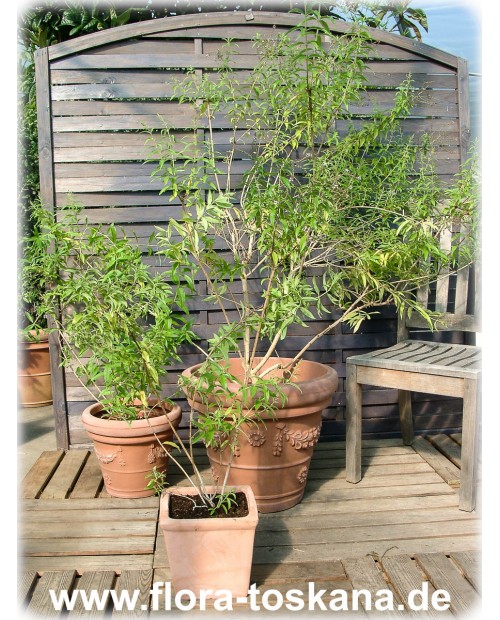Ziziphus jujuba - Indian Jujube, Chinese Date
With their rust-red, apple-tasting, grape-sized fruit, these slender, frost-tolerant trees will find a place in any orchard where something special is appreciated.
Ziziphus jujuba, also called Indian Jujube or Chinese Date, can look back on a cultural history of over 4000 years and was brought to Europe as early as around the year 0. In the Mediterranean region, it is therefore regarded as a virtually indigenous plant. In China and India they are cultivated in plantations and are as important as apples in our country, especially since they are very easy to cultivate (pest-free, adaptable) and you will get a rich harvest every year. The fruits reach 2-3 cm in size. They are egg-shaped and mature until fall, when the golden-yellow colored leaflets are already beginning to fall. Brown-red, thin skin encloses the whitish pulp, each with a seed. The fruit tastes sweet and aromatic, but only approximately like an apple: it has its own specific jujube aroma. In arid growing regions, the fruits are left hanging on the trees to be dried by the sun. With their wrinkled skin, they then look like dates - hence the name Chinese Date. Even very young plants from the age of 2-4 years start to fruit. The flowers are yellow and slightly fragrant. They are self-fertile and are pollinated by insects. The plants with their gray bark initially grow very thin branches. Only with increasing age do the thorned branches grow thicker and form loosely structured, elegant crowns, which are covered with pinnate leaves from spring to fall. Chinese Dates are said to be hardy down to a temperature of minus 20°. In our country it is possible to plant jujubes in the garden in regions with mild winters (e.g. Rhine valley, coastal areas). Protection from the winter sun is advisable (cover with brushwood, fleece or similar). Potted plants should be overwintered indoors. Due to the leafless crown the plant can manage even with little light and warmth in winter.![]() Quality: edible fruits; harvest even from young plants; no harvest fluctuations; elegant growth; robust & cold tolerant; easy to winter
Quality: edible fruits; harvest even from young plants; no harvest fluctuations; elegant growth; robust & cold tolerant; easy to winter![]() Use: in pots from May outdoors (balcony, terrace) with overwintering indoors; all year round in winter garden beds; planted out in the garden (regions with mild winters)
Use: in pots from May outdoors (balcony, terrace) with overwintering indoors; all year round in winter garden beds; planted out in the garden (regions with mild winters)
Data sheet
- Family
- Rhamnaceae
- Origin
- Asia (mediterranean)
- Flowering period
- Spring
- Color of flowers
- Yellow
- Fruits
- Edible fruits
- Growth
- Tree
- Location
- Sunny
- winter temperature
- 5 (+/- 5) °C
- Minimum temperature
- -15 °C
- Hardiness Zones
- 8
- Height
- 4 - 5 m
You might also like
Customers who bought this product also bought:











































